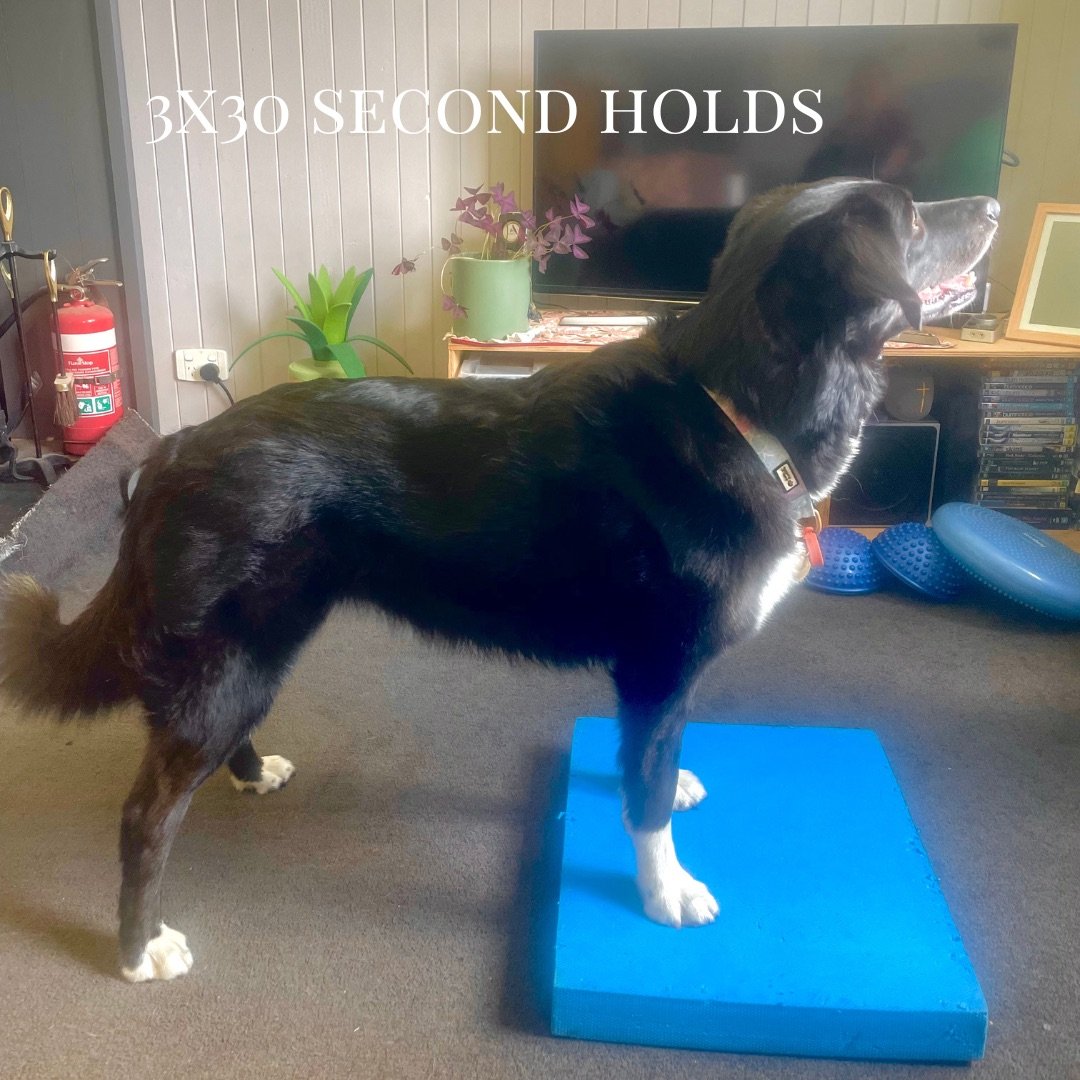Strong Core, Happy Dog: Why You Should Be Focusing on Your Dog’s Core Strength
Just as with humans, a dog’s core stability is the cornerstone from where the limbs work most efficiently. It is the crucial link between the front and hind limbs, the stabilising mechanism of the spine and is responsible for correct posture in standing, sitting and during movement. It is so important that it is always the first area I work to strengthen, irrelevant of why a dog comes to see me.
The core muscles in dogs are those of the abdomen, back and some limb muscles. Together these form a corset to protect the spine. The stronger the muscles, the tighter the corset. The tighter the corset, not only the greater protection, but the stronger the base from which all movement occurs.
Why is it so important that a dog has a strong core?
Weakness of the core can lead to a number of issues. These include:
Increased stress through the joints of the limbs and spine. This stress is exacerbated further if a dog is particularly active, a weekend warrior or involved in dog sports. This then increases a dog’s risk of injury or early onset osteoarthritis.
Inefficiency of movement. What I mean by this, is where a dog has to actively struggle to control a movement. Again, this predisposes a dog to injury.
Increased stress through the joints and/or inefficiency of movement can then lead to the overloading of other muscles/tendons/ligaments to compensate. If this load becomes too great, or is repetitive, it increases the risk of these structures breaking down.
What are the signs that may indicate a dog has poor core stability?
Weakness of the core can look like the following:
Difficulty holding a prolonged sit or stand position with good posture. Your dog should be able to hold these positions, without having to make adjustments, for 30 seconds. If a dog is struggling to hold a static stand, they will often default to a sit, or vice versa.
A sway back, also called a lordosis. This looks like an inward curve of the spine at the lower (lumbar) region of the spine.
An arched back, which is also known as a roached back, kyphosis or abdominal tucking. This looks like an upward curve of the spine through the loin region.
Poor balance, particularly when moving between positions, standing on an unstable surface or when lifting one leg.
Excessive rear end sway when moving.
It is important to note that the above signs could be caused by a number of different issues, and not just due to poor core stability. If you notice any of these problems, please have your dog assessed by a veterinarian or canine rehabilitation professional to determine the exact diagnosis.
Even if your dog doesn’t show any signs of core weakness, it is still important to add core stability training to your dog’s exercise program. Even if your dog is a pet dog, and doesn’t participate in any sporting activities, ensuring they have and maintain good core strength is essential for decreasing the risk of injury, overload and stress on the joints, particularly as they age.
So, what are some simple exercises that you can do with your dog?
Here are basic core stability exercises, in the sequence I teach them, that I start with for all dogs I see in my practice. If you have a large breed dog, then I will often swap the balance disc out for a Bosu Ball (see last photo):
From these exercises, you can progress further, but for most dogs I find these sets of exercises are more than adequate to help build, and then maintain, core stability.
If you try these exercises, please let me know how you find them! Not only is it a good way to help prevent future injury, but it is also a fantastic way for you to bond with your dog!












